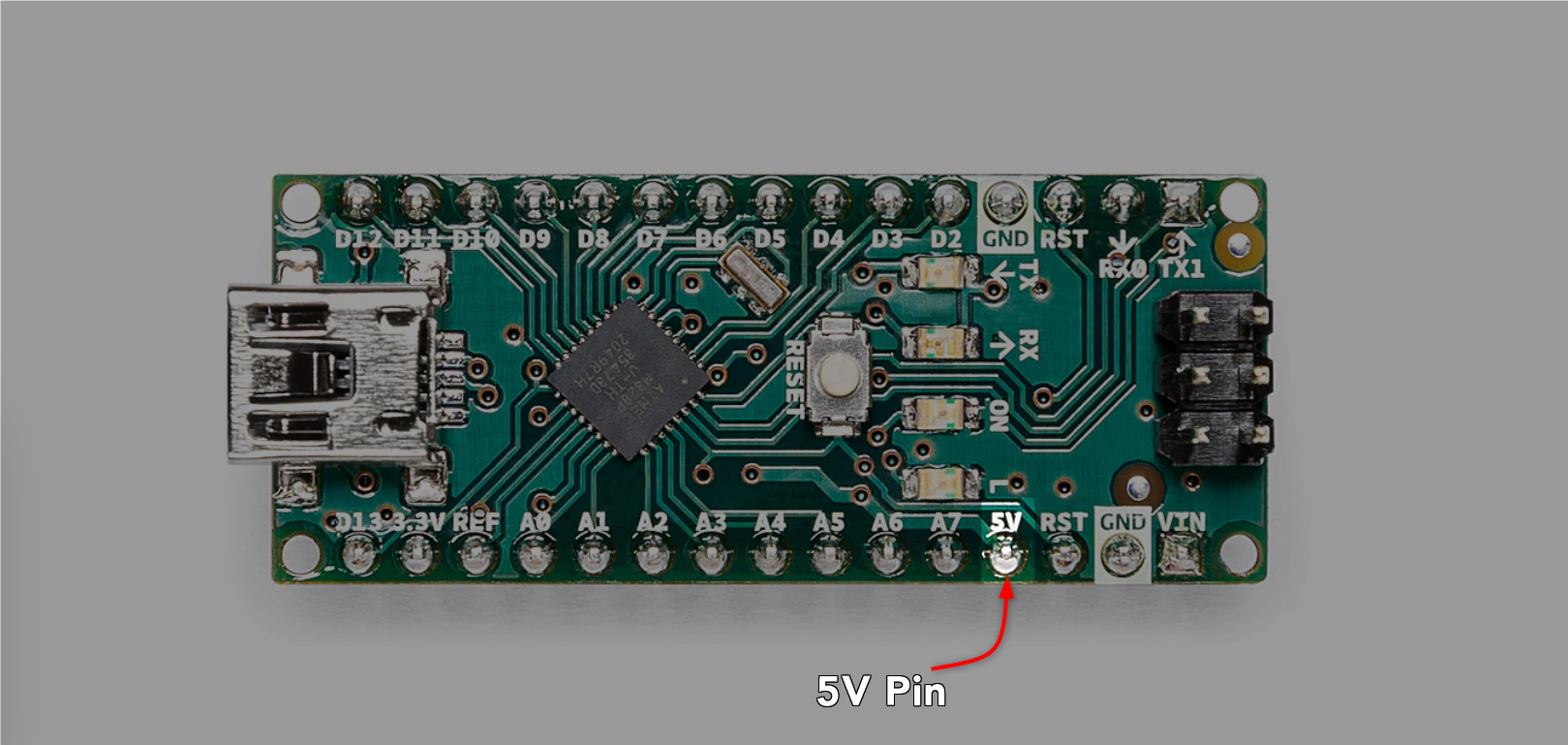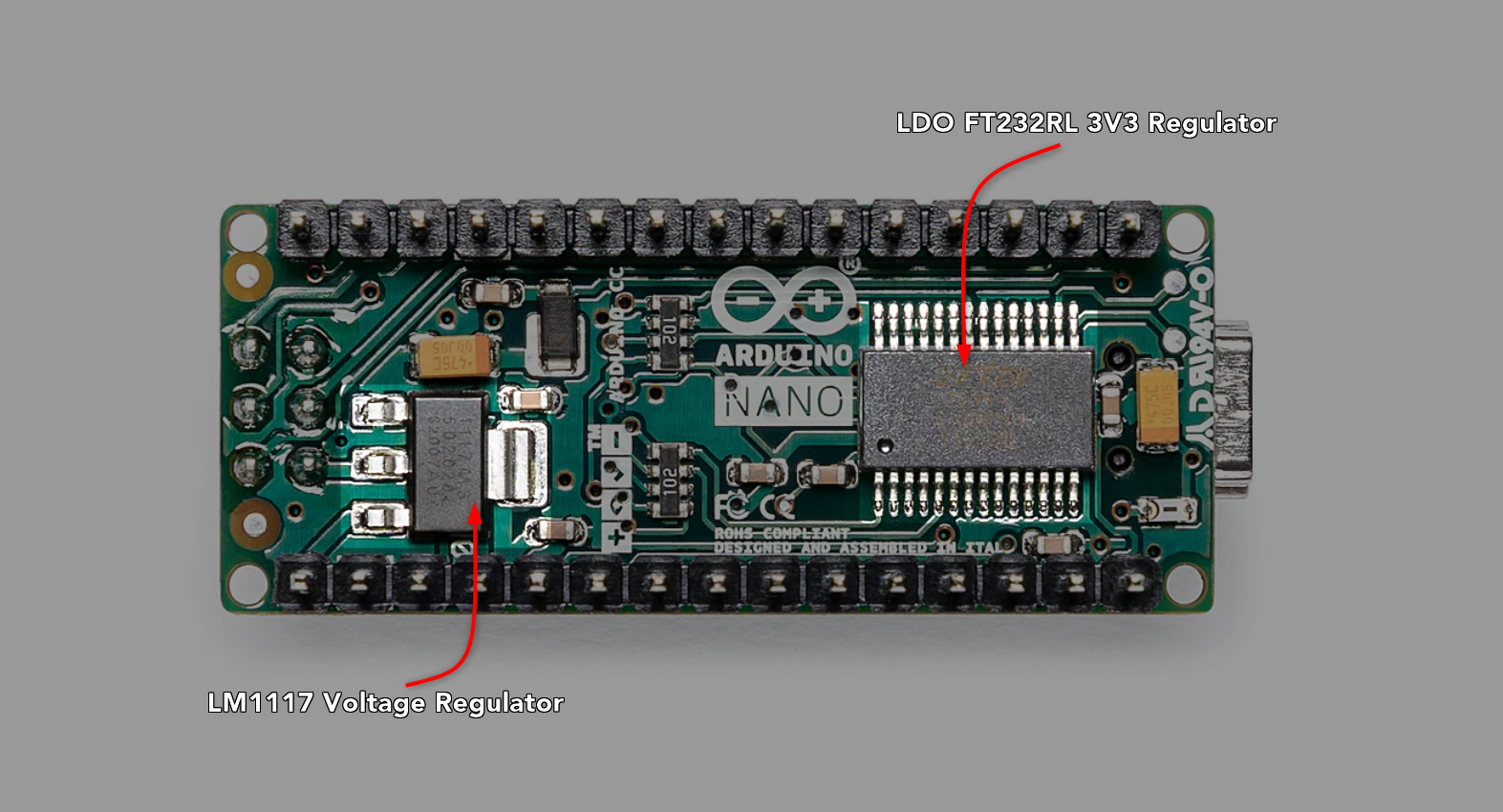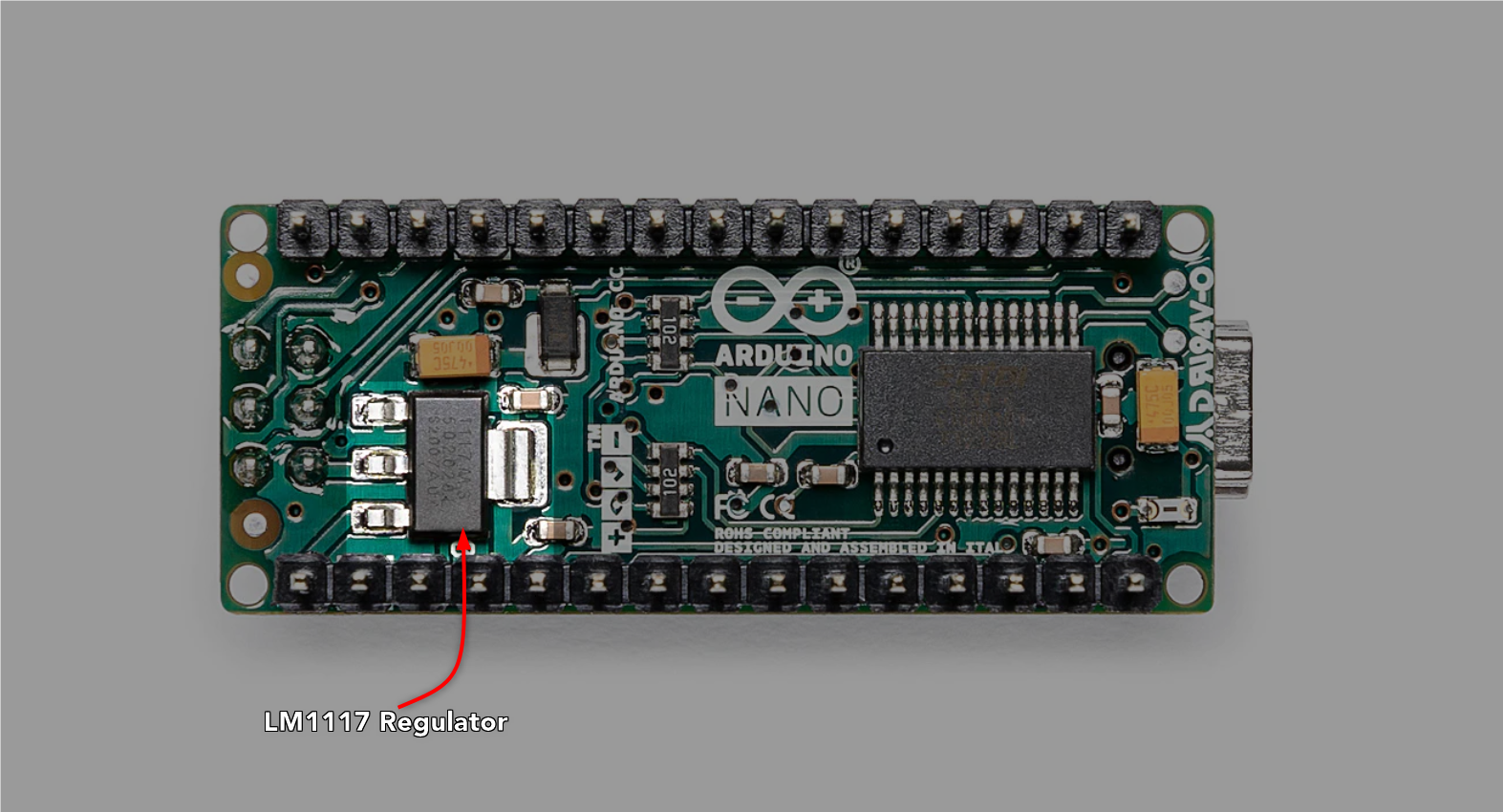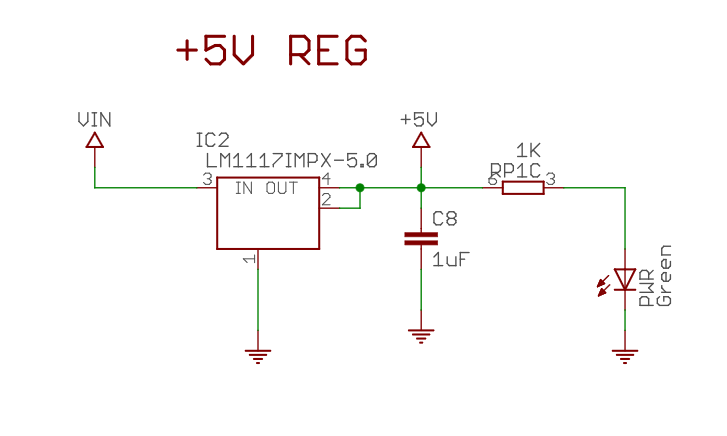Can Arduino Nano Provides Us with 5V Output
Yes, Arduino Nano can provide a 5V output. This is one of the standard voltage levels that is available on most Arduino boards, including the Nano. The 5V output is typically provided by the on-board voltage regulator (LM1117), which takes a higher input voltage (usually 7-12 volts) and converts it down to a stable 5V output.
In Arduino Nano 5V output can be accessed through a number of different pins. Arduino Nano has a separate 5V output pin. However, we can also use the 5V from the VIN pin of Arduino Nano which works dual way as input as well as output.
Arduino Nano 5V Pin
Arduino Nano has an onboard 5V pin. The 5V pin in the Arduino has dual functionality. This pin can output constant 5V as well as act as power source when no external supply is connected against the USB port or VIN pin. It is typically used to power the Nano from an external power source, such as a DC power adapter or a battery. The 5V pin can supply a maximum current of 500mA.
Note: It is important to note that the 5V pin is not intended to be used as a primary power source for the Arduino Nano. It is intended for use as a power output to supply power to other devices or circuits and is not designed to provide enough current to power the Nano itself. To power the Nano, you should use the VIN pin or the USB port.
Following is the current limit of Arduino Nano board 5V pin:
| Board | 5V Pin Output Current | 3V3 Pin Output Current |
| Arduino Nano | 0.8A | 0.15A |
Warning: It’s not recommended to use 5V as input power source for Arduino Nano. As the 5V pin is connected to the output of the voltage regulator (LM1117) which means a slight increase in voltage will damage the Arduino Nano permanently.
Suppose voltage at output of regulator becomes higher than input which will result in large current flow from output to input resulting in damaging the board permanently. While powering Arduino Nano using the 5V pin always uses the regulated 5V supply.
Arduino Nano 5V Voltage Regulator
Arduino Nano has primarily only one main voltage regulator which is LM1117 that outputs regulated 5V. However, Arduino Nano also contains the 3V3 pin which means we also have a secondary voltage regulator which converts the output of LM1117 to 3V3 volts.
The 3V3 pin is connected with FT232RL (USB to Serial) interface chip. This USB to serial chip takes 5V coming from the USB port or through the output of LM1117 and regulates the 5V to 3V3. Using a 3v3 pin we can power different sensors.
LM1117 5V Voltage Regulator
The VIN pin is connected with the LM1117 voltage regulator. Any voltage between 7V-12V can be given to this pin. LM1117 regulates this incoming voltage to 5V and feeds it to Arduino Nano peripherals. It’s recommended to not give voltage more than 9V as most of the voltage is dissipated as heat during conversion to 5V.
Here is a schematic diagram of LM1117 regulator in Arduino Nano:
LM1117 voltage specifications:
| Voltage Regulator | Output Voltage | Max Input Voltage | Max Output Current |
| LM1117 | 5V | 20V | 800mA |
Conclusion
Arduino Nano can provide us with 5V constant supply. Arduino Nano has onboard voltage regulators which convert input voltage to a regulated 5V. This regulated 5V is fed to the microcontroller and other peripherals. For more information related to Arduino Nano 5V pin and on-board voltage regulator read the article.






